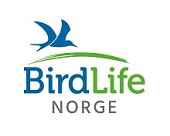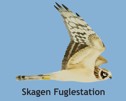
|
|
Nightjar This Nightjar was caught at Lista Bird Observatory in 2018. This is the first Nightjar ever trapped at the station. © Jonas Langbråten ANNUAL REPORT 2018: Significant climate effect on bird migration in southern Norway New studies from Jomfruland and Lista Bird Observatories show that 30 selected migratory species of birds now arrive (more than) four days earlier than they did in 1990. Climate change is probably an important cause.
The main trends for 2018, a year characterized by extreme heat and low rainfall during the spring and early summer, were that the majority of the 54 bird species included in the standard monitoring (at Jomfruland and Lista BO) were trapped in numbers below normal. In Jomfruland, the autumn ringing campaign showed the lowest numbers since monitoring began in 1990. Less than half of trapping numbers Both spring and autumn campaigns at Jomfruland BO were lower than average. In the autumn, the trapping 63% lower than normal, and thus the lowest in the entire monitoring period. At Lista BO, the spring trapping was about normal, while the autumn was around 16% lower than the average. Since juveniles are dominant in the autumn campaign at the bird observatories, this is an indication of low juvenile survival this year, as also figures for 2018 from the Ringing Central at Stavanger Museum suggest. Heat and dryness Spring and summer 2018 were characterized by extreme heat and consequently dryness. For several bird species adapted to a suitable wet and cold summer, this may have had a negative impact on both food availability and consequently young production this year. For example, the heat may have resulted in early hatching of insect larvae, which may have led to a "mismatch" between food availability and the breeding season for several bird species. It is likely that this, and other effects of the heat and dryness, may be one of the reasons why the trapping at the bird observatories, in particular in autumn 2018, were so low. The migratory birds arrive earlier Our new phenology index shows that on average 30 selected migratory bird species have advanced their arrival 4.1 days in the period 1990 - 2018. Arrival in 2018 was about 0.6 days earlier than expected, being 4.7 days earlier than the average in 1990. Among the species that arrive earlier, the Greylag Goose and the Blackcap are remarkable with 15.1 and 11.5 days advanced arrival respectively. Common Whitethroat and Greenshank have also advanced their arrival with 8.2 and 7.2 days respectively. The Pink-footed Goose has been previously shown to have advanced its migratory time at the bird observatories almost one month earlier. The displacement of this species is now so big that it arrives before the standardized period starts at Jomfruland, which begins on April 1st. The arrival of the different species shows a close correlation with temperature, and it is very likely that the earlier arrival is related to an increasingly warmer climate, both locally and globally. This is also the conclusion of a large scientific study recently published in the journal "Ecological Indicators", which includes data from Jomfruland and Lista. Climate change and bird migration Climate scientists' forecast provide a good reason to expect more and bigger effects on bird migration and on bird populations. As the data from Jomfruland and Lista BO shows, many species adapt to the warmer climate as much as they can, changing the bird migration. Those who fail to do so are at risk of adverse effects. More extreme weather, including in the form of drier, warmer and wetter weather can also have great effects on bird populations. The hot and dry summer in 2018 gives a clear indication of just that. Important and unique monitoring The monitoring at the bird observatories is unique in the Norwegian context providing information on the phenology (migratory route) of our most common passerine birds. This makes us able to see how climate change affects bird migration. The monitoring is also one of the few methods that can give us information about winter survival and breeding success of the different species. In addition, it provides important information about long-term trends in the populations of a variety of bird species from different habitats and environments, and from a large geographical area. The annual report from the bird stations for 2018 can be read HERE. | ||||||

| Ringing numbers | ||||
|
| Reportasje fra Lista FS i Aftenposten |

|
| Seasonal deviation | ||||||||||||||||||||||||||||||
|
|
Følg Følg Lista FS på facebook.com |
| Siste 5 på siden |
|
Begynnerkurs i ringmerking: 17.-18. august 2024 The annual report for 2023 is available! Fuglefestival 2.-3. september 2023 Report from spring 2023 Ny rapport: Måling av elektromagnetiske feltstyrke fra fugleradar ved Lista fyr. |
| Nyheter fra NOF |
|
Søk aktivitetstilskudd innen... Seier for kystfuglene Betydelig medlemsvekst i... Indianerbekkasin i Pasvik –... Unge fuglekikkere fra hele... Tusenvis av hunder slippes... Miljøminister Andreas... Bjørn Olav Tveit er tildelt... |
Lista Fuglestasjon
Fyrveien 6
NO-4563 Borhaug
post@listafuglestasjon.no Tlf: 949 86 793
 |  |


 Only in English
Only in English



